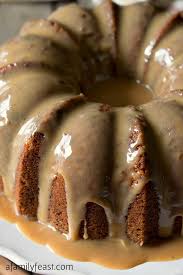
Questions & Answers on Caramel Coloring and 4-MEI
Consumer Info About Additives & Ingredients Main Page
What is 4-methylimidazole (4-MEI)?
4-methylimidazole (4-MEI) is a chemical compound that is not directly added to food; rather it is formed as a byproduct in some foods and beverages during the normal cooking process. For example, 4-MEI may form when coffee beans are roasted and when meats are roasted or grilled. 4-MEI also forms as a trace impurity during the manufacturing of certain types of caramel coloring (known as Class III and Class IV caramel coloring) that are used to color cola-type beverages and other foods.
Is there a risk from eating foods that contain 4-MEI?
Based on the available information, FDA has no reason to believe that there is any immediate or short-term danger presented by 4-MEI at the levels expected in food from the use of caramel coloring.
What about studies that show 4-MEI to be a carcinogen?
In 2007, the National Toxicology Program (NTP) issued a report summarizing the results of toxicological testing conducted on 4-MEI in rats and mice. A 2-year study in rats was inconclusive regarding carcinogenicity, but a 2-year mouse study showed an increased incidence of certain lung tumors. These NTP studies were conducted in rodents at levels of 4-MEI that far exceed current estimates of human exposure to 4-MEI from the consumption of Class III and Class IV caramel coloring in food products such as colas.
How do I know whether food products contain caramel coloring?
Foods containing added colors must list them either by name or as “artificial colors” in the ingredients statement on the food label. Because there are other artificial colors, the presence of “artificial colors” on a food label does not necessarily mean that caramel coloring is contained in the food. Also, the presence of “caramel coloring” on a food label does not necessarily mean that the food contains 4-MEI, because the term “caramel coloring” also may be used to describe Class I and Class II caramel coloring. Class I and Class II caramel coloring do not contain 4-MEI.
What is FDA doing about the presence of 4-MEI in caramel coloring?
To ensure that the use of caramel coloring in food continues to be safe, FDA is currently reviewing all available data on the safety of 4-MEI and is reassessing potential consumer exposure to 4-MEI from the use of Class III and Class IV caramel coloring in food products. This safety analysis will help FDA determine what, if any, regulatory action needs to be taken. Such actions could include setting a limit on the amount of 4-MEI that can be present in caramel coloring. However, in the interim, FDA is not recommending that consumers change their diets because of concerns about 4-MEI.
Can 4-MEI be eliminated from food products?
Eliminating 4-MEI in food is virtually impossible. However, in the case of caramel coloring, companies can take steps to reduce its formation during the manufacturing process. In fact, several companies have already reduced the amount.
What is the position of international food regulatory agencies on 4-MEI?
The European Food Safety Authority (EFSA) assessed the risk to 4-MEI from the use of caramel colors in 2011 and concluded that human exposure to 4-MEI in Europe was well below the threshold level reflected in the NTP study. In 2012, EFSA re-evaluated the consumer exposure to 4-MEI from the use of caramel colors, and reaffirmed its 2011 conclusion. EFSA also noted that 4-MEI does not appear to cause DNA mutations (genotoxicity) and that the type of tumors observed in the mice from the NTP study can occur spontaneously in these animals. For these reasons, EFSA concluded that they had no concerns about Europeans being exposed to 4-MEI from the use of caramel coloring in food.
